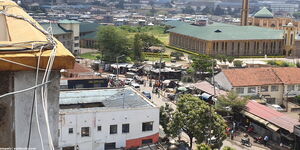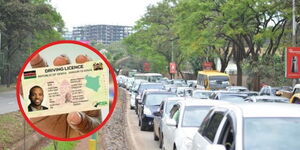Cases of police-related killings or disappearance of suspected criminals turned heads in 2020, with at least 130 individuals reported as missing.
According to Missing Voices, a website that documents suspected police killings, most of the missing suspects were youth from informal settlements and low-income residential areas.
Individuals such as the infamous Hessy wa Kayole have struck fear at the heart of gangs terrorising Nairobi residents.
Notably, messages posted on social media pages under the ‘Hessy’ handle highlight the unidentified officer's mode of operation.
He always starts with a warning message targeting specific suspects in which they are urged to relocate or face dire consequences. Death usually follows soon after
Kenyans.co.ke interviewed several Nairobians in a bid to find out their view on suspected gangsters being allegedly gunned down by law enforcement officers.
“I am not pro-murder, but I have to say this new crop of thugs have proved to be a menace and I would not lose sleep over the gunning down of such individuals."
“Take the example of the teenage gangster who was gunned down in Dandora. His mother was crying on TV after confessing to having paid Ksh95,000 to bail him out less than a month before he was killed. He vowed to reform but was gunned down in the middle of a robbery,” Casper Kerry, a Buru Buru resident opined.
His sentiments were echoed by residents interviewed in South C and Garden Estate.
Stephen Kiragu, a resident of Utawala estate, was of a different opinion, “I believe in the judicial system. I’d rather have the courts fail to convict a thousand guilty thugs than the police shoot one innocent suspect”.
The interviews showed that most Kenyans glorify police killings of suspects because they do not believe in the criminal justice system, killing the suspects to many is instant justice.
However, crime continues to increase even when police eliminate suspected gangs.
“We have to fix our justice systems,” Keri added.
Speaking to Kenyans.co.ke, an officer working at the Independent Policing Oversight Authority (IPOA), who prefered anonymity explained that despite the heavy criticism levelled against the police, some of the instances warrant lethal force.
“When an officer’s life is in danger, he has the right to protect him/self,” he detailed.
The Police Service Act requires police officers who use lethal fire to report to their immediate superior, explaining the circumstances that necessitated the use of force. Police officers also are required to report for investigation any use of force that leads to death or serious injury to the IPOA.
On its part, Human Rights Watch has been making persistent calls to end the killings and the use of excessive force.
“Kenyan police are shooting young people dead in total disregard of the rules for the use of force,” said Otsieno Namwaya, an official at Human Rights Watch during a recent interview.
On December 30, 2020, the search for a firearm snatched from a police officer in Umoja Estate, Nairobi ended tragically when the suspect and his accomplice were shot dead.
The shooting was a drop in the ocean of similar incidences recorded over the last year.












